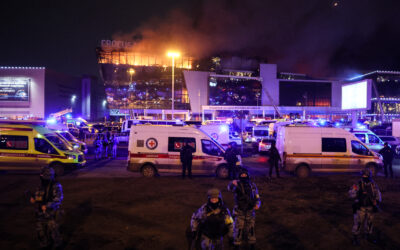
Assessing the ISIS-K Threat: Could It Happen Here?
SUBSCRIBER+ EXCLUSIVE ANALYSIS – For months, U.S. officials have sounded vague but ominous alarms about the threat of terrorism in the U.S. – most noteworthy, […] More
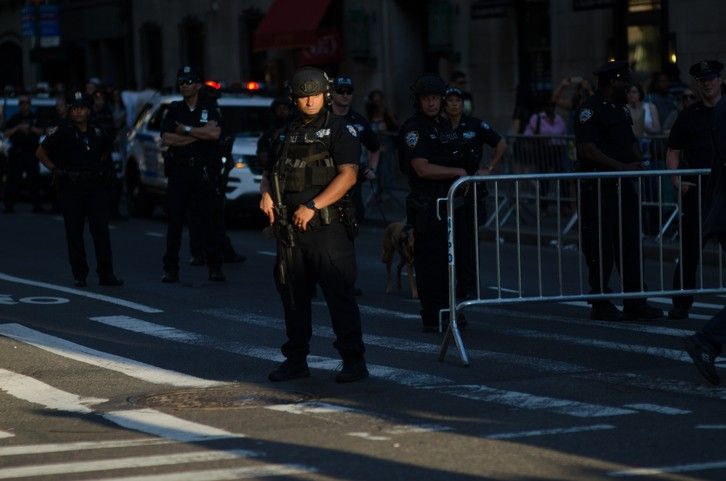
The Growing Irrelevance of Organizational Structure for U.S. Domestic Terrorism
Bruce Hoffman, Terrorism Expert, Professor, Georgetown University
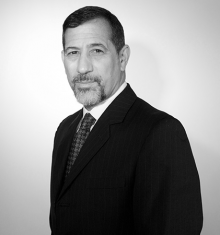
Bruce Hoffman is a professor at Georgetown University and the Shelby Cullom and Kathryn W. Davis Visiting Senior Fellow for Counterterrorism and Homeland Security at the Council on Foreign Relations. He has served as a commissioner on the Independent Commission to Review the FBI’s Post-9/11 Response to Terrorism and Radicalization, a Scholar-in-Residence for Counterterrorism at the CIA, and an adviser on counterterrorism to the Coalition Provisional Authority in Iraq in 2004.
Colin Clarke, Senior Fellow, The Soufan Center

Colin P. Clarke is a Senior Fellow at The Soufan Center where he studies terrorism, extremism, and political violence. He is also an Associate Fellow at the International Centre for Counter-Terrorism (ICCT)- The Hague and an adjunct senior political scientist at the RAND Corporation.
For decades, America’s primary terrorist threat came from groups based abroad. Today, a new crop of terrorist actors is emerging from within our own borders. What was mostly a monochromatic threat from Salafi-jihadist groups like al-Qaeda, the Islamic State (IS), and those individuals they sought to inspire, has now become a kaleidoscope with new threats from “boogaloo bois,” white supremacists, neo-Nazis, shadowy anarchist elements, and the extreme fringe of violent incels—politicized involuntary celibates fueled by a hatred of women.
Although diverse and for the most part unconnected to each other, this often bewildering array of anti-government extremists, violent misogynists, and left-wing militants share a common objective of disrupting society and in the process, overturning existing norms if not the entire political, social and economic order.
Unlike the identifiable threats we have faced from hierarchically-organized, groups like al-Qaeda and IS, the new emerging groups of individuals are devoid of the command-and-control apparatuses that counterterrorism practitioners typically seek to disrupt. Command and control is the mechanism by which terrorist groups plan, coordinate, and execute attacks and is a key component of the group’s organizational structure. For the past two decades, the United States has relentlessly targeted the leaders of terrorist groups with decapitation strikes, which has disrupted their organization’s infrastructure, and interdicted their finances. But this new collection of terrorist adversaries possesses few of the attributes that proved so vulnerable to counterterrorism actions.
Thus, bureaucratic organizations with hierarchical leadership structures and clearly-defined objectives have been supplanted by loosely networked movements with amorphous goals that exist across the ideological spectrum that we are only now beginning to understand. Moreover, members of these networks are more susceptible to what terrorism expert Daveed Gartenstein-Ross calls “fringe fluidity,” where an experience with one form of extremism can lead to a distinct radicalization pathway and thus, facilitate the movement of individuals from one form of militancy to another. There are several high-profile examples, including Nick Young, the Northern Virginia transit cop who was enamored with both Nazi Germany and the Islamic State. In May 2017, a neo-Nazi turned Islamic State supporter named Devon Arthurs killed his two neo-Nazi roommates because they mocked his newfound zeal for radical Islam after formerly being a member of Atomwaffen.
Popular theories like accelerationism, whose proponents believe in the complete destruction of current systems of government, appeal to individuals that claim allegiance to movements on both the far-left and the far-right. Taken together, this perhaps suggests the growing irrelevance of organizational structure when assessing U.S.-based domestic terrorist threats. For neo-Nazi groups like The Base and Atomwaffen Division, as well as the boogaloo movement and many far-right extremists, a confluence of ideological affinities is more powerful in inspiring and provoking violence than the
hierarchical terrorist organizational structures of the past. The merging of concepts that motivate individuals to engage in terrorism, no matter how quixotic, is likely to prolong the threat and complicate effective countermeasures. One immediate implication of this ideological mélange is that it makes it more difficult to identify tangible grievances and therefore craft appropriate policy responses.
This trend has been abetted by the continued emphasis on lone wolf or lone actor attacks. Originally articulated by American far-right extremists as a “leaderless resistance” strategy it was subsequently embraced with intensified fervor by Salafi-jihadist groups like the Islamic State, which encouraged followers to be both entrepreneurial and opportunistic in launching attacks in the West. The result was a shift in tactics, techniques, and procedures, including a spike in vehicle attacks against unsuspecting pedestrians along with other demonstrably crude attacks using commonplace weapons like axes and machetes. Both white supremacists as well as violent incels, for instance, have each used cars deliberately to harm civilians without being instructed or trained to do so by a terrorist leader. Since the protests began over the murder of George Floyd, there have been nearly three dozen reported cases of vehicle attacks, including one allegedly perpetrated by a high-ranking Ku Klux Klan (KKK) member named Harry Rogers in Richmond, VA.
Although we have seen this less clearly defined organizational structure among some domestic terrorism threats in the United States in the past, the current iteration is unprecedented. In the 1980s and 1990s, violent, extremist far-right groups like The Order and the Phineas Priesthood adopted the leaderless resistance strategy and operated clandestinely to conduct bombings and assassinations and commit crimes including bank robberies. But such groups were short-lived or had limited impact. Today, the dimensions of these diverse threats present new challenges to Federal law enforcement agencies and their state, local, and tribal partners.
Even without a robust and identifiable organizational structure in place, Federal law enforcement is still tasked with mapping how the individuals and small cells belonging to these movements communicate, delegate tasks, procure weapons and equipment, and maintain operations security. Yet even when the Federal Bureau of Investigation (FBI) is successful in disrupting plots through the use of informants, the fact that these individuals do not belong to an actual organization or group, per se, means that the arrests, while critical to keeping Americans safe, can only have a limited impact in reducing the overall domestic terrorism threat. This is precisely what the strategy of leaderless resistance was designed to ensure.
Counterterrorism strategies must adapt to the range of traditional and emerging threats from a multiplicity of international and domestic adversaries. In some cases, domestic and international milieus will intersect and overlap. There is undoubtedly an interplay between foreign countries like Russia interested in stirring the pot domestically in the United States, and violent non-state actors operating on American soil, even if the actual linkages are murky and difficult to uncover. The leader of The Base, Rinaldo Nazzaro (aka Norman Spear), for instance, is an American citizen believed to be living in St. Petersburg, Russia and the United States recently listed the Russian Imperial Movement (RIM) as a specially designated global terrorist organization or SDGT—an important step that falls just short of the ultimate sanction of a foreign terrorist organization, or FTO. A U.S. citizen and white supremacist named Matthew Heimbach has been linked to RIM in the past, thus underscoring the eroding distinction between foreign and domestic when Americans lead and are of members of State Department-sanctioned terrorist groups.
The law has failed to keep pace with either the social media technology that facilitates and abets radicalization or terrorist adversaries that defy traditional conceptualizations. It may be worth considering legislation focused specifically on domestic terrorism that would create a category facilitating the prosecution of crimes that in an international context are considered terrorism. Equally importantly, such legislation might standardize the collection and analysis of data on hate crimes and other acts of violence that should be prosecuted as terrorism to bring greater equity in the sentencing of foreign and domestic terrorists. Persons convicted in the United States of providing material support to IS, according to the George Washington University’s Program on Extremism, receive sentences in excess of thirteen years in prison. Last February, a member of Atomwaffen received a twelve-month sentence for similar charges. The law should remain agnostic to the ideologies that fuel political violence while focusing on the actions themselves.
Since September 11, 2001, the so-called Global War on Terror saw the United States leverage its exquisite military and intelligence capabilities to focus on disrupting terrorist plots from North Africa to South Asia, even as organizations like al-Qaeda, the Islamic State, and their respective affiliates and franchise groups continue to adapt and evolve. Yet now, as evidenced by events that have played out over the first half of this year, there is a renewed sense of urgency to deal with actual terrorist threats percolating on American soil. Policymakers could consider the appropriate laws, authorities, and policies to ensure that the country is prepared to meet the ever-changing terrorism threat, including its most recent domestic permutations.
Read more expert-driven national security insights, perspective and analysis in The Cipher Brief
Related Articles

SUBSCRIBER+ EXCLUSIVE ANALYSIS – For months, U.S. officials have sounded vague but ominous alarms about the threat of terrorism in the U.S. – most noteworthy, […] More

OPINION / EXPERT PERSPECTIVE — On the night of March 22, four masked individuals armed with automatic weapons entered the Crocus City Hall in the […] More

OPINION / EXPERT PERSPECTIVE – The death toll from last week’s terrorist attack inside a concert hall in a suburban Moscow neighborhood is now at […] More
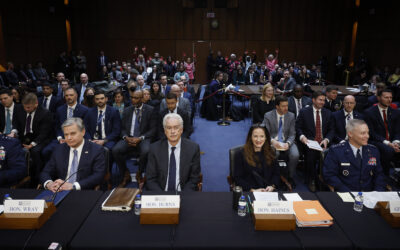
SUBSCRIBER+EXCLUSIVE REPORTING — The nation’s top intelligence agencies delivered a sobering threat assessment Monday, focused on spillover dangers posed by the wars in Ukraine and […] More
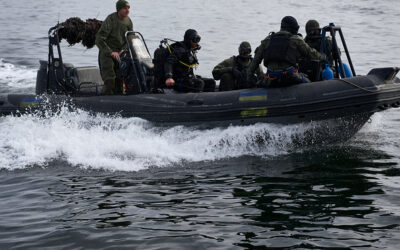
SUBSCRIBER+ EXCLUSIVE ANALYSIS – From the Middle East to Russia’s war on Ukraine, cybersecurity to disinformation to the emergence of an axis of powers – […] More
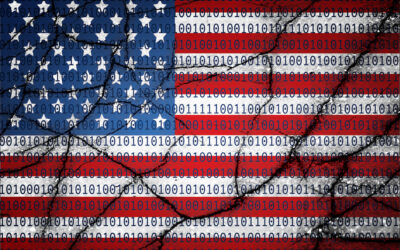
SUBSCRIBER+ EXCLUSIVE INTERVIEW – The Office of the Director of National Intelligence (ODNI) is offering some rather overt clues about just how the country’s 18 […] More
Search